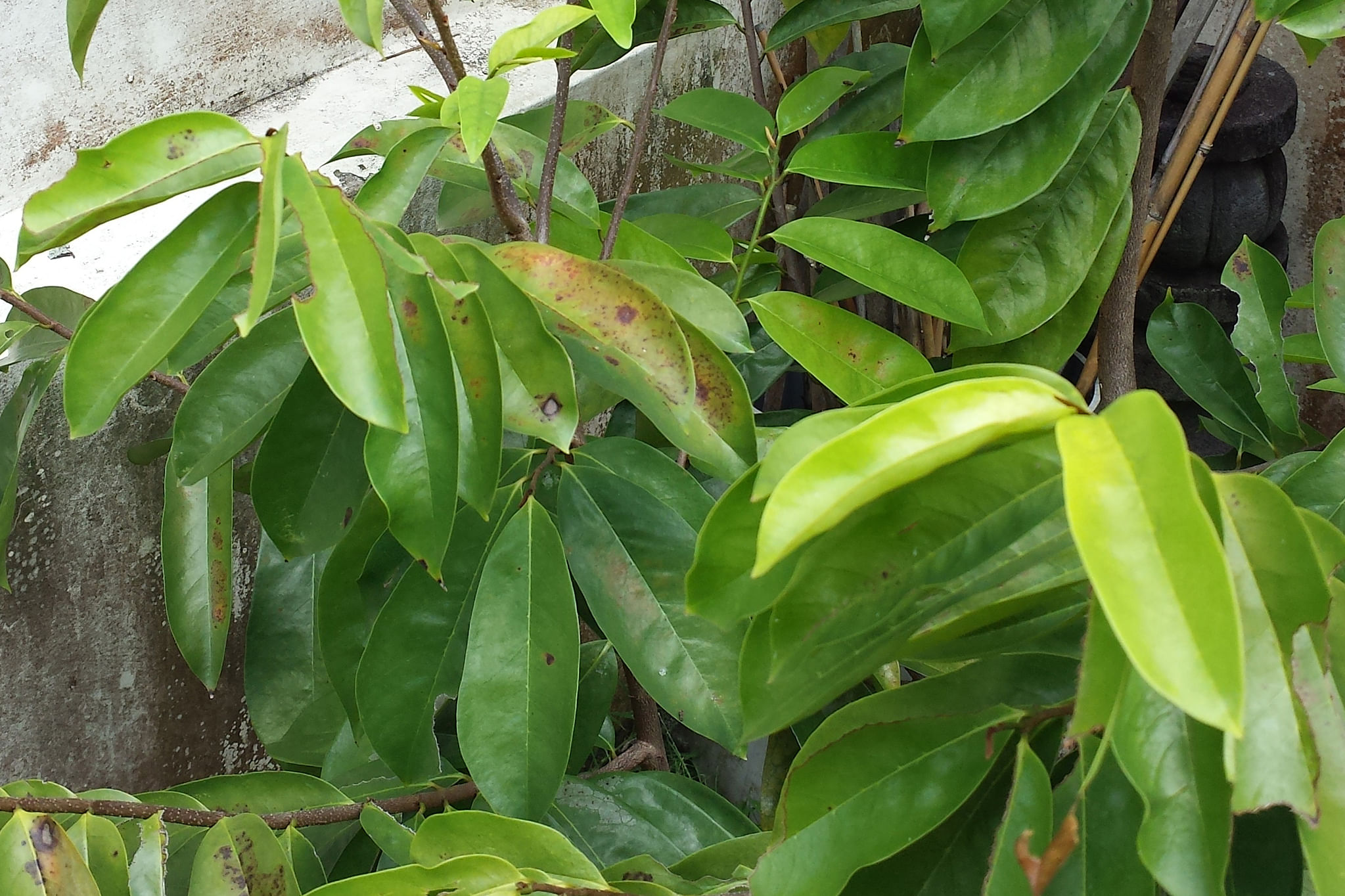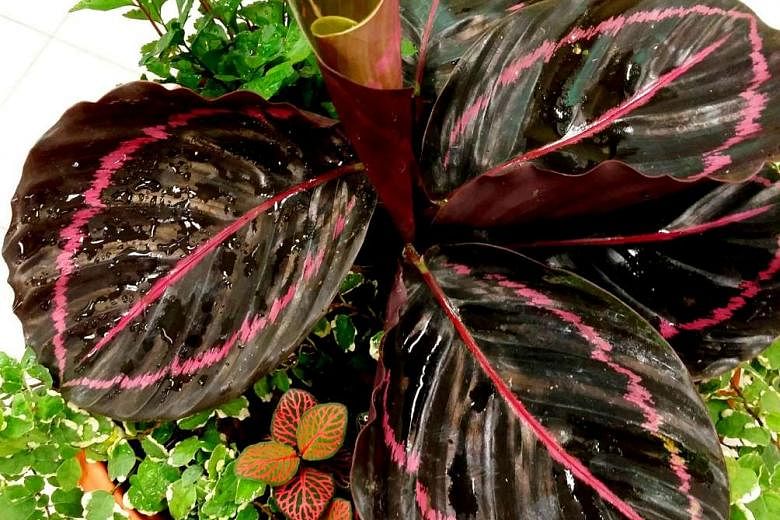Patcheson leaves likely due to sunburn
I have a soursop tree for about three years. Lately, some leaves have been dry, with brown, burn-like patches. They have also lost their green shine. What happened and how do I remedy it?
Henry Teo
Your soursop plant appears to have suffered from sunburn. The typical symptoms of sunburn will include burnt patches on the plant's leaves, loss of shine and yellowing leaves.
Did you recently remove or prune back some taller trees that were growing nearby?

Plants that have been growing in the shade need some time to acclimatise to brighter light. Sudden exposure to more light will lead to stress and injury to the leaves.
For now, you may want to build a shade cloth over the plants to protect them and gradually acclimatise them to the prevailing light levels.
The new foliage will probably get used to the higher light intensity as it develops.
Air Potato's tubers are edible
I saw this climber, which has heart-shaped leaves, in a Bedok community garden. The fruit looks like a walnut, has soft thin brown skin, white flesh and no seeds. I buried one of the fruits and a pair of leaves sprouted and had tendrils. Whatis this plant and is it edible?
John Ng

The plant is botanically known as Dioscorea bulbifera. It is commonly known as the Air Potato.

It is often regarded as a medicinal plant and not to be confused with another also commonly grown species, Dioscorea alata. Their aerial bulbils are very different in shapeand size.
The so-called "fruit" is not the true fruit of the plant.
It is, in fact, the plant's bulbils which are produced between the leaf axils along its fast-growing twinning stems.
It also produces tubers beneath the ground. The tubers are edible and should be cooked before consumption. They can be prepared in the same way as other underground vegetables such as cocoyams, potatoes and sweet potatoes.
Pests the cause of leaves' white dots
The underside of the leaves of my pomegranate plant has white dots. I have tried cutting away the infected leaves, but the dots are found on others. I have also tried spraying pesticide that was recommended by a florist, but it does not solve the problem. The other healthy leaves have turned brown. What can I do?
Angeline Lim Li Chien
From the picture, it is most likely that a sucking insect pest is affecting your plant. However, it is difficult to tell if it is a scale or mealy bug.
Your pomegranate plant needs to grow under the right conditions. It demands full sun to grow well and its soil needs to be constantly well-drained. Plants grown under insufficient sunlight and/or are overfed with fertilisers will be prone to insect pests such as scales and mealy bugs.

When applying pesticides, ensure that you cover the plant thoroughly. Sucking pests tend to hide in hard-to-reach areas and infested parts of the leaf often curl up into a protective mass - this makes it difficult for the pesticides to reach the bugs.
In your situation, it is necessary to prune heavily infested and misshapen plant parts before spraying the plants. However, do not overprune the plant as pruning back to very old wood will do more harm than good. The plant will no longer be able to produce new growthwhenpruned back too hard.
Also, it is necessary to repeat applications of pesticides at least once a week to reduce the infestation. You may also need to switch your pesticides to avoid the development of pesticide resistance in pests that affect your plant.
Well-draining soil needed for Limau Kasturi tree
How do I make my Limau Kasturi tree bear fruit?
NgChoonHai
Limau Kasturi or the Calamondin (botanical name - Citrus microcarpa) is a plant that does not tolerate heavy, water-logged soils.
Make sure you grow it in a sunny spot and in soil that is moist and drains well. A sandy soil mix that has organic matter incorporated into it would be a good option. The plant has to attain a robust and healthy size with sufficient leaf cover before flowering occurs.
Avoid pruning the plant too frequently and remember to use a fertiliser that promotes flowering and fruiting.
• Answers by Dr Wilson Wong, a certified practising horticulturist and founder of Green Culture Singapore (www.greenculturesg.com). He is also an NParks-certified park manager.
• Got a gardening query? E-mail it with clear pictures, if any, and your full name to stlife@sph.com.sg
Tip: Unusual black leaves for Calathea Dottie
Calathea is a large genus of plants belonging to the Prayer Plant family (Marantaceae). Cultivars of Calathea roseopicta, in particular, are highly popular due to the wide array of foliage patterns and colours that are available.
Recently, a cultivar with almost black leaves called "Dottie" made its appearance in the local nursery trade. It makes for an exotic candidate for planting in the garden. It is also widely used as a container plant in plant arrangements.
To grow Calathea well, ensure that you provide plants with bright filtered sunlight for four to six hours daily and protect them from direct sunlight and drying winds.
Keep the root zone moist at all times and do not over-fertilise plants.

